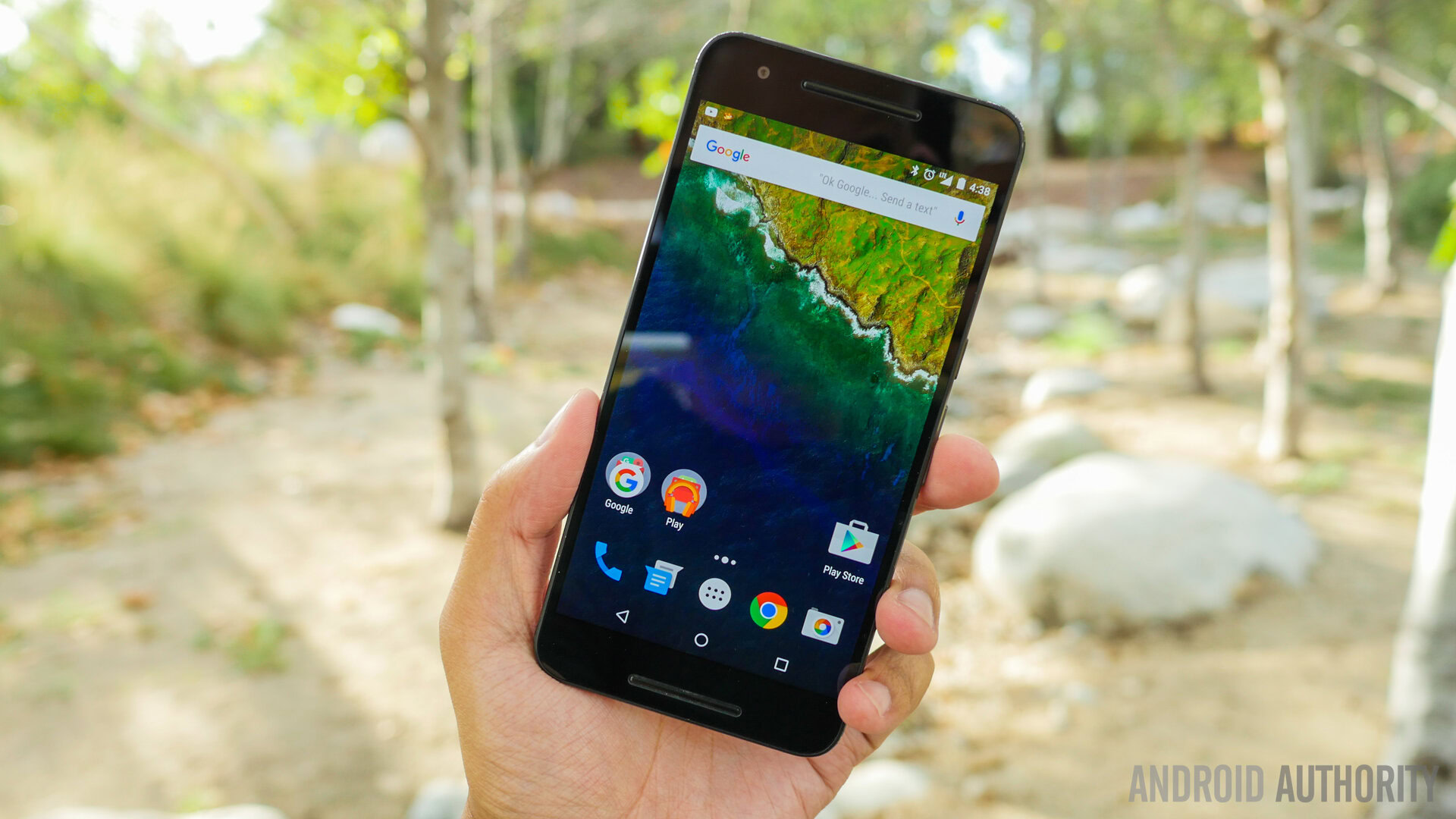Affiliate links on Android Authority may earn us a commission. Learn more.
HUAWEI Mate 8 vs Nexus 6P

Starting with the Mate 7 in 2014, HUAWEI proved to the world that it had the skills and resources necessary to craft a truly premium device that easily competed with more established players in the space. Since then, HUAWEI has continued to raise up the bar, and made history last year as the first Chinese manufacturer to partner with Google for a Nexus device.
With the Nexus 6P, HUAWEI merges its exceptional hardware skills with Google’s lighter, snappier stock software, and the end result is a handset that is hailed by many as the best flagship currently on the market. But what about HUAWEI’s Mate series? Despite the huge shadow cast by the Nexus 6P, the Mate 8 is a massive leap forward for HUAWEI once again, further refining the design of the Mate 7 while also offering exceptional flagship-level performance.
So how does the HUAWEI Mate 8 compare to the HUAWEI-made Nexus 6P? We find out as two of HUAWEI’s best creations go head to head in this detailed Mate 8 vs Nexus 6P comparison.
Design
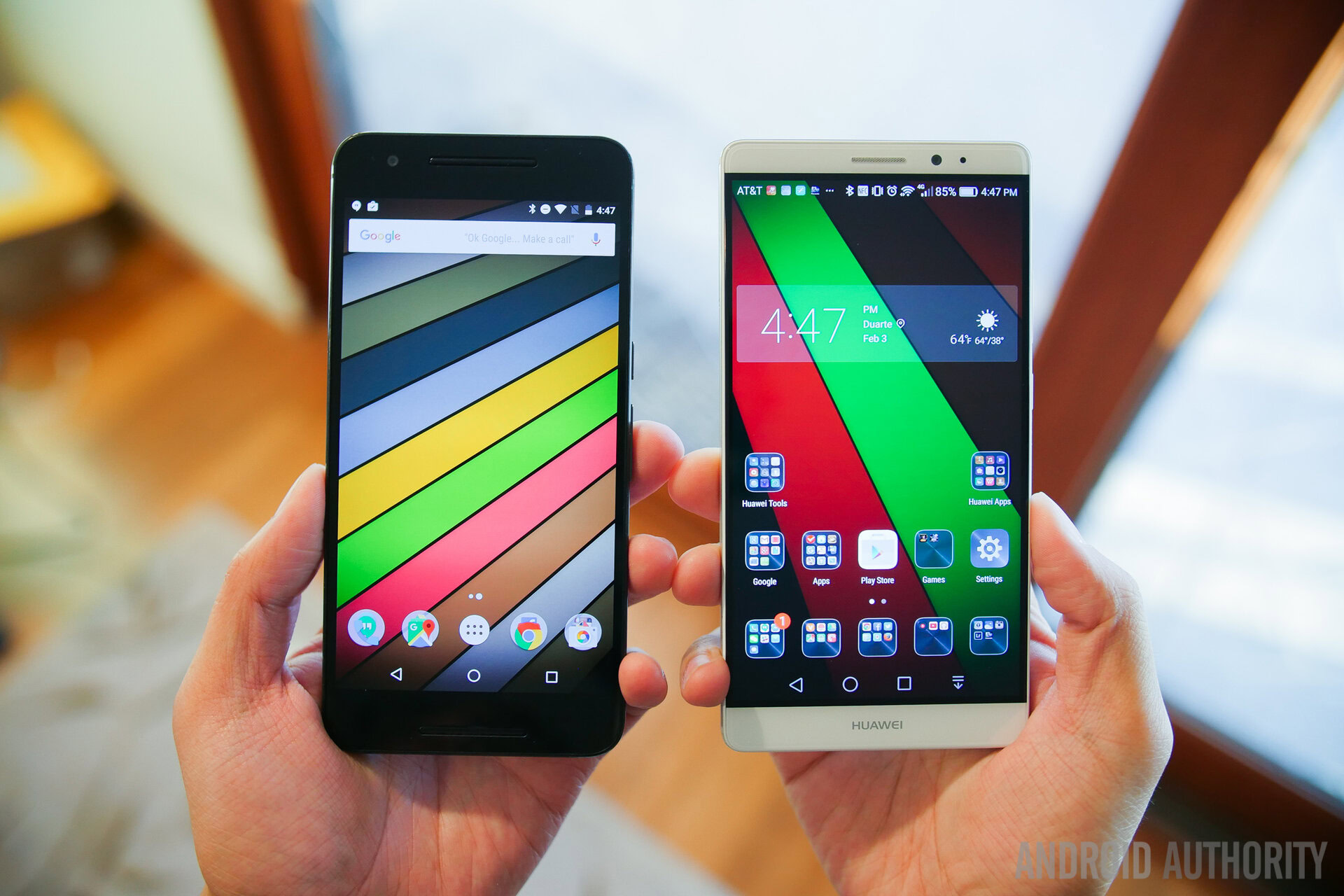
Even at first glance, it’s pretty obvious these two flagships are related. Premium materials are par for the course regardless of which device you get, and the metallic design language looks great on both. They feel great in the hands too, despite some very minor slippage due to the materials used. Of course, there’s also some distinct differences that help set HUAWEI’s latest flagships apart.
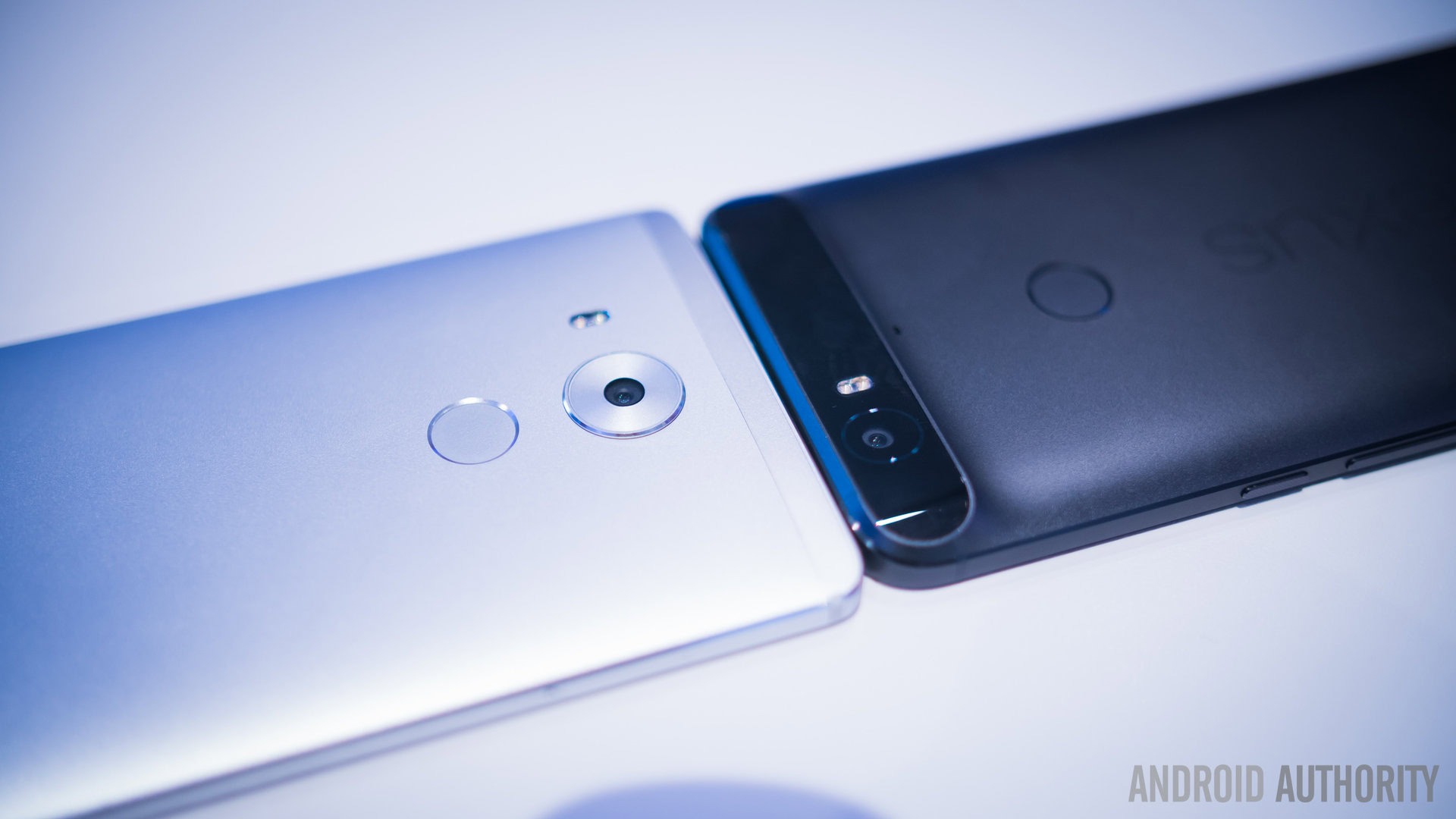
The HUAWEI Mate 8′ design language is a direct evolution of the Mate 7, as well as the Mate S. With the Mate 8 you get a symmetrical design that might feel a bit too familiar when coming from the Mate 7, though its rounded camera and fingerprint scanner help give a more modernized look. The speaker has also moved from the rear to the bottom this time around. On the front you get a display that has relatively small bezels and on-screen keys, as well the front facing camera, the usual sensors, and the HUAWEI logo towards the bottom.
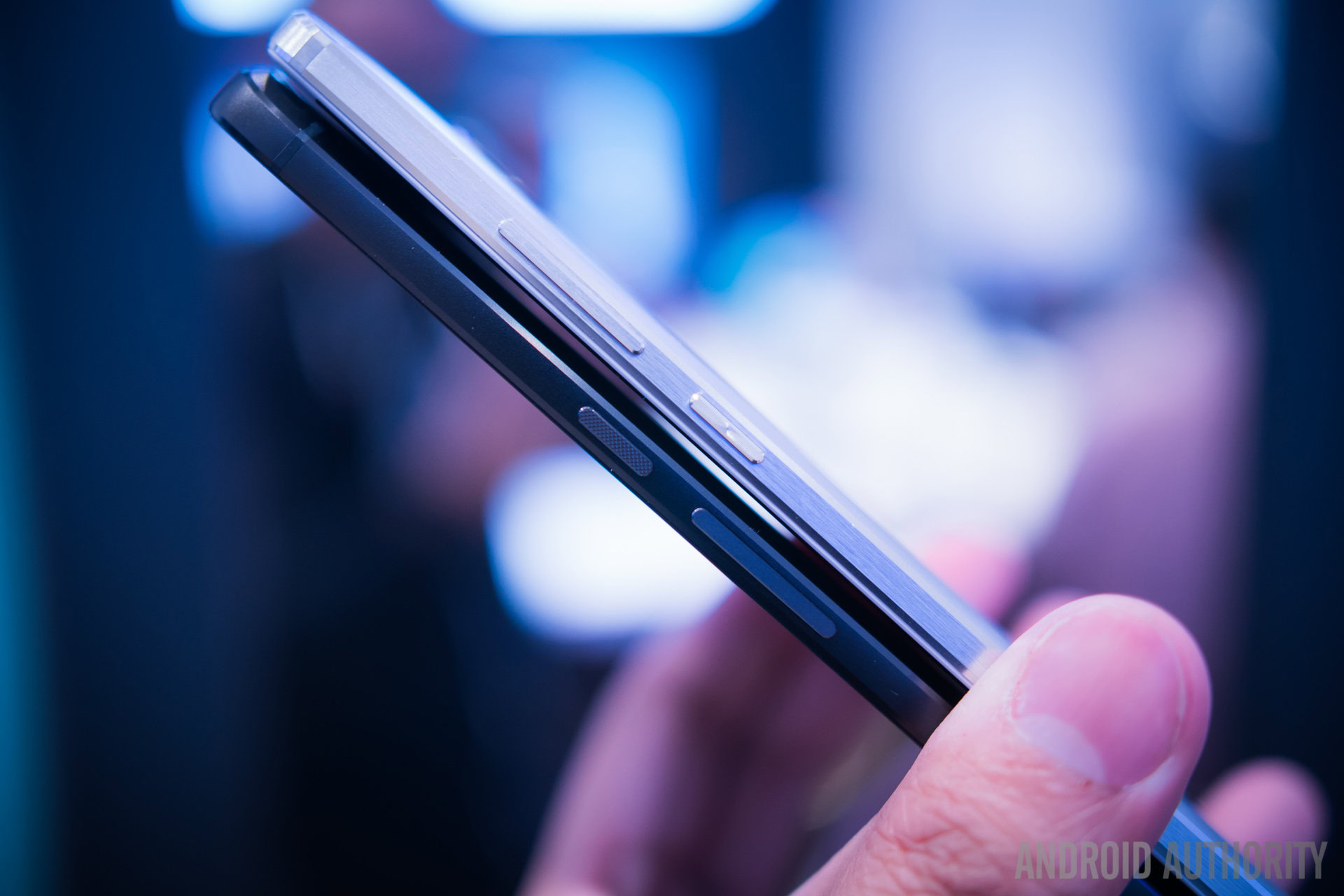
On the other hand, the Nexus 6P manages to stand out from both its predecessor, the Nexus 6, and its Mate brethren. The prominent Nexus logo on the back is right below the rear-mounted fingerprint reader, and the large black bar up top houses the camera and its accessories. The Nexus 6P also has some unique additions including front-facing speakers and a Type-C USB port, features you won’t find with the Mate 8.
While both phones handle pretty well for devices of their size, neither are exactly perfect for one-handed use, though it can certainly be done. Dimensions do differ a bit with the two, with the Mate 8 being a bit wider due to the 6-inch display, while the Nexus 6P is taller, thanks to its front facing speakers. Ultimately though, we’re looking at two phones that are reasonably similar in terms of size and weight, despite differences in screen size.
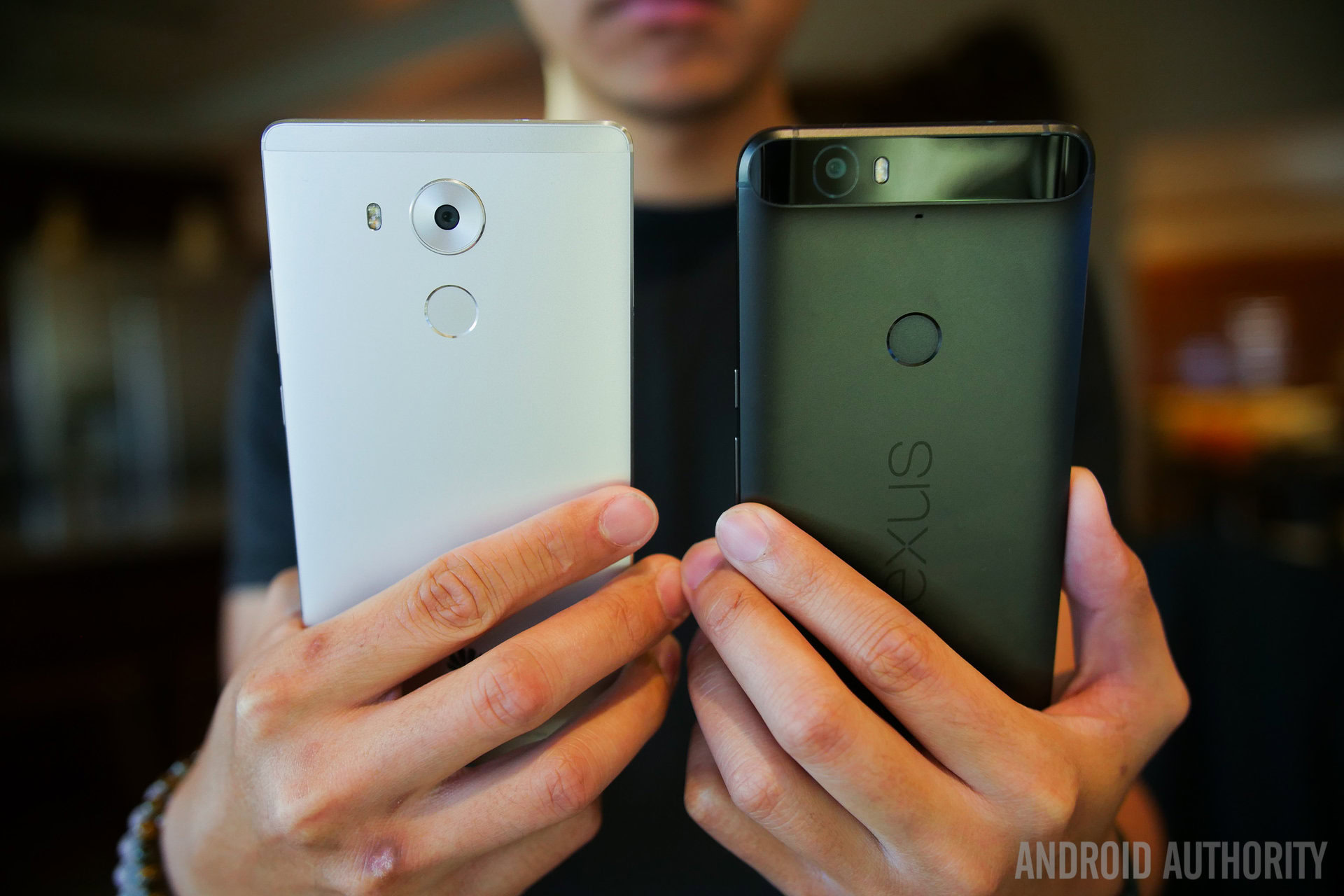
Which is better? The answer to that is a very personal one and, even among our team, the answer varied wildly. Some of us certainly prefer the Nexus 6P, whereas others have expressed a preference for the Mate 8. Regardless, Both designs demonstrate the very best of Huawei, delivering solid build quality across the board.
Display
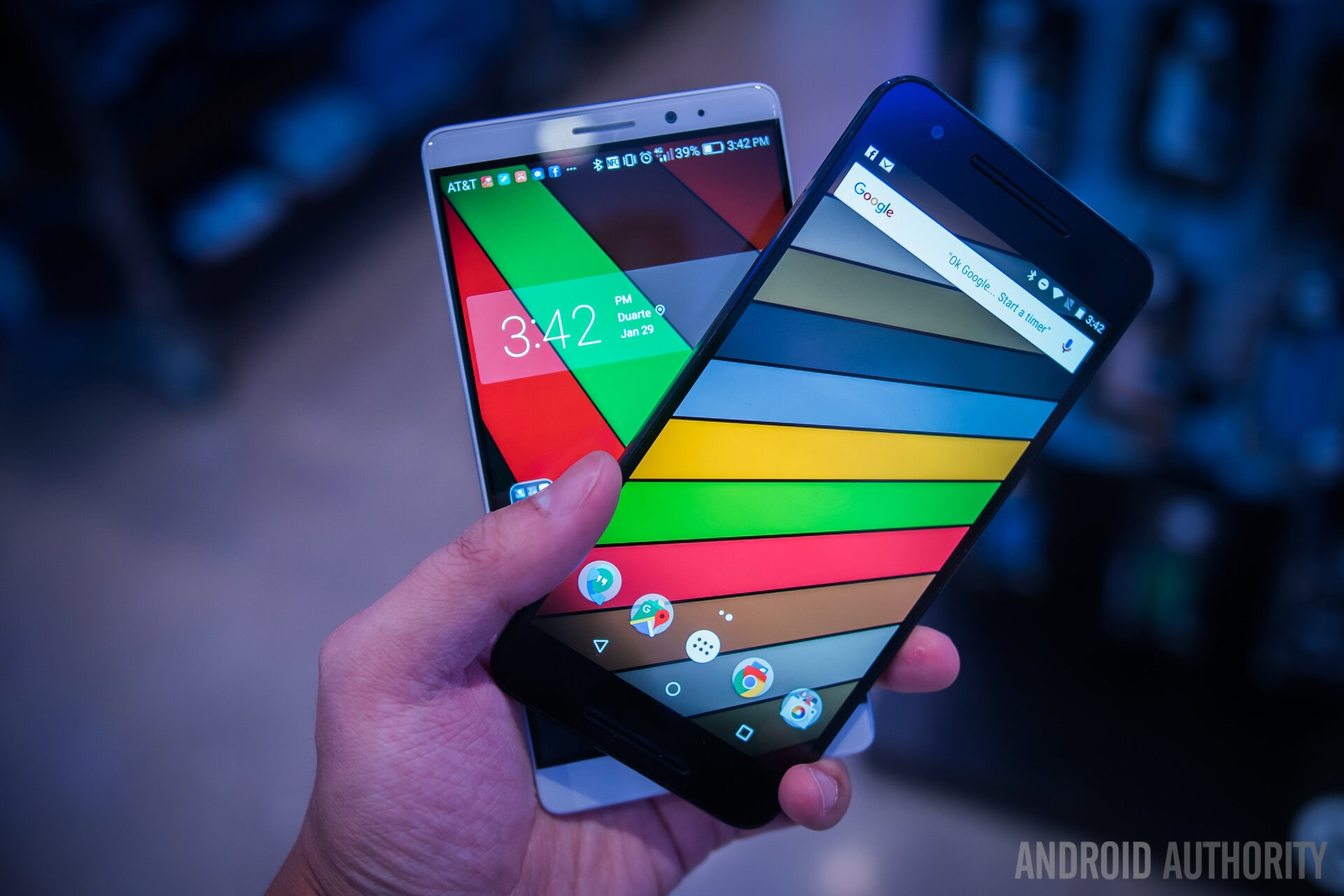
For those that are spec hungry, the decision here is an easy one. The QHD AMOLED display on the Nexus 6P is certainly the better performer here when compared to the 1080p IPS display found on the Mate 8. For those that prefer larger screen real estate, however, it is worth keeping in mind that the Mate 8’s 6-inch screen is the larger of the two. Of course, it is up for debate how much of a difference that extra .3-inches really makes.
The Nexus 6P isn’t just at an advantage in resolution, but AMOLED itself is often the prefered choice for many. AMOLED displays tend to offer a better experience for those that are looking for deep blacks, vibrant, vivid, and saturated colors, as well as tons of brightness for comfortable viewing in broad daylight. The Nexus 6P also offers ambient display technology, which utilizes the AMOLED screen to bring us notification cards at a glance.
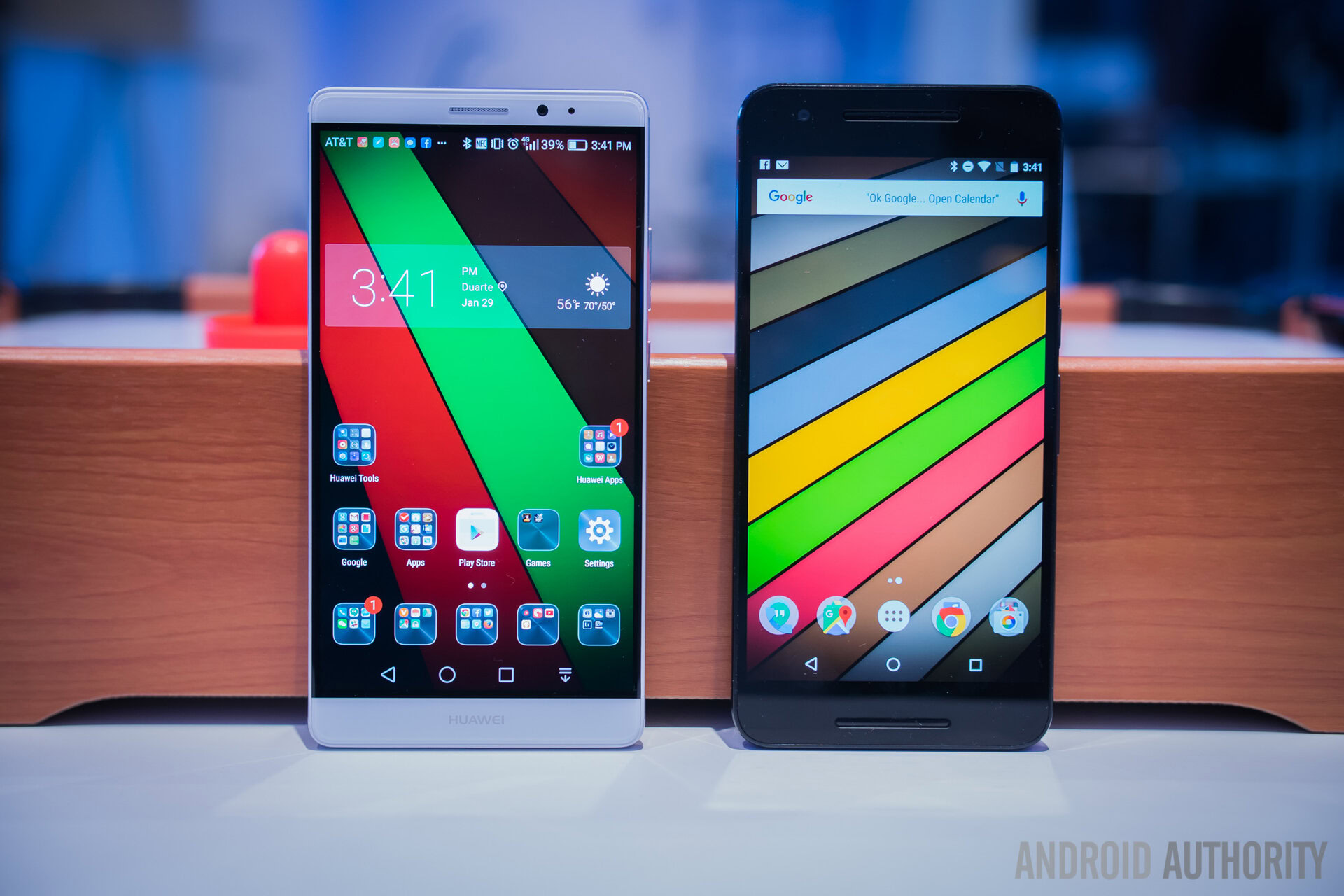
As for the HUAWEI Mate 8, the 1080p IPS display might not have the advantages found with the Nexus 6P, but don’t let this fool you, the display is no slouch. For starters, the Mate 8’s JDI-NEO display technology helps make up for some of the shortfall from not having QHD resolution. Overall, the Mate 8 likely has the best 6-inch 1080p on the market, and you’ll find that gaming and media is quite enjoyable here, despite its perceived disadvantages.
If you want that higher res and extra bit of color depth, the Nexus 6P will provide it for you, but for the general user that isn’t a display or spec nut, you’ll probably find little real difference in day to day use.
Performance
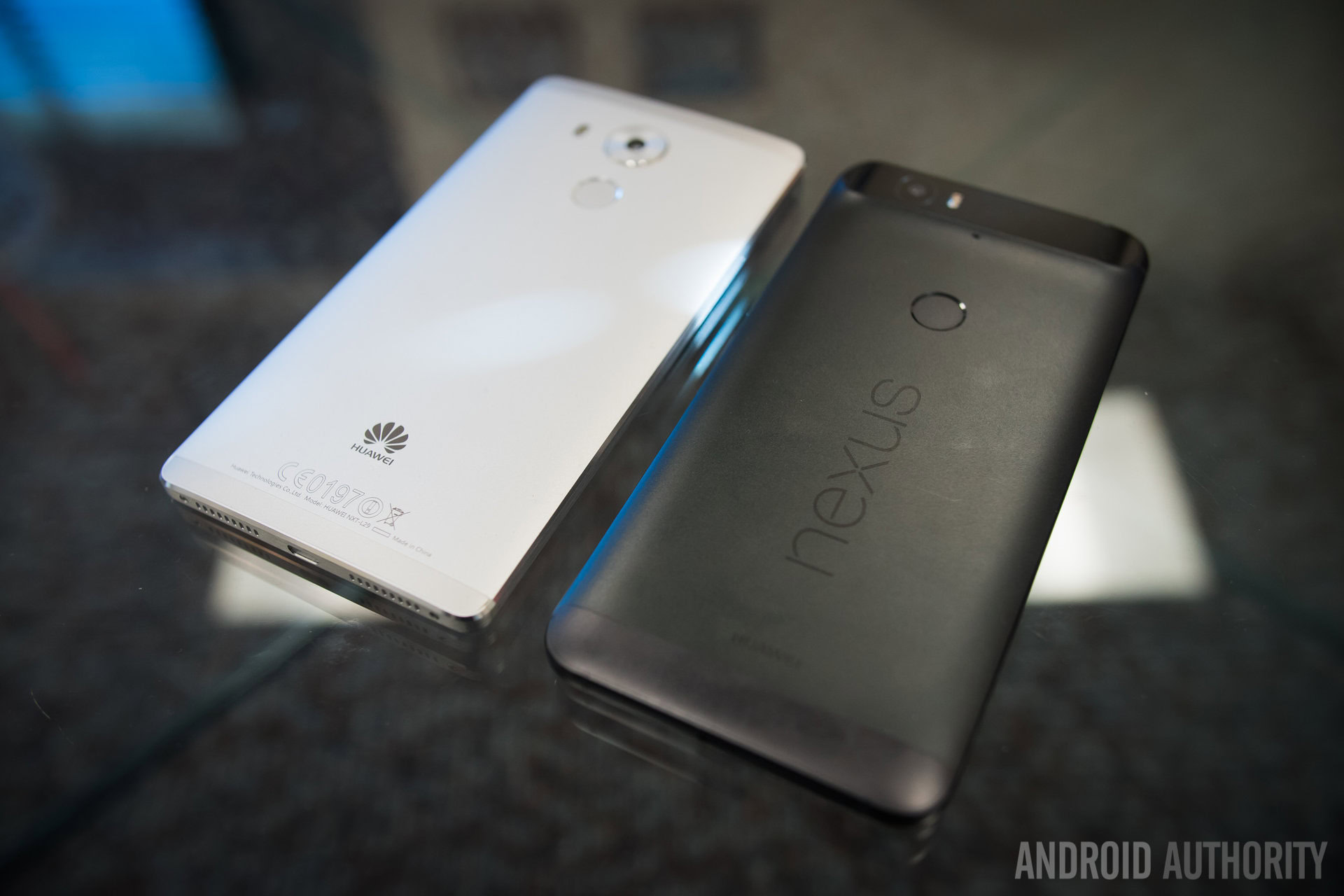
Despite being made by the same OEM, under the hood we find two very different SOC packages on offer.
For the Nexus 6P, we get the octa-core 2GHz Qualcomm Snapdragon 810 backed by an Adreno 430 GPU and 3GB RAM. Even though the Snapdragon 810 has a somewhat mixed reputation, it performs exceptionally well here, helped along by the fact that the Nexus 6P is running stock Android 6.0 Marshmallow.
In the other corner, we find the HUAWEI Mate 8 rocking an in-house HiSilicon Kirin 950 octa-core CPU with 3GB RAM (or 4GB in select models), backed by the Mali-T880 GPU. Although HiSilicon Kirin chips might not enjoy the same brand recognition as Qualcomm or Exynos processors, rest assured that HUAWEI has proven itself more than capable of creating a great mobile SOC.
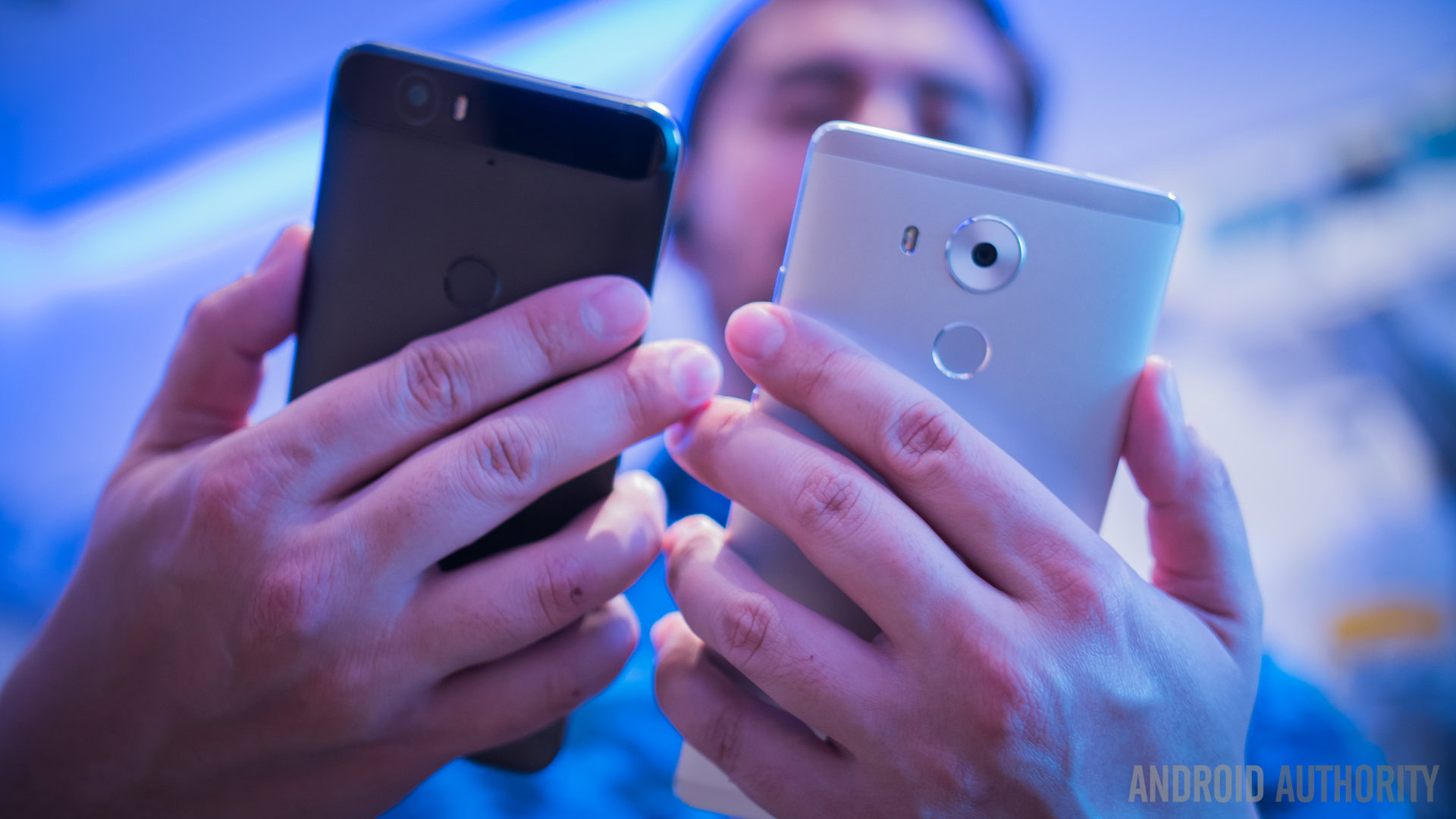
While both of these packages couldn’t be more different on paper, what they have in common is some of the best performance you’ll find in the mobile world. Speed is great on both of these handsets and no matter what we did with either, we haven’t been able to slow them down one bit. Gaming and media are going to be a blast with either one of these phones, and for those wondering about how the Mali graphics compare to the Adreno 430, we really didn’t see a big real world difference between the two.
Summing it up, the Nexus 6P’s familiar stock interface is exactly what you’d want from a Nexus device, and the Snapdragon 810 is more than capable of providing a high-end stock experience. The Mate 8 also moves along swimmingly, despite its more intensive UI.
Hardware

In the past, the Nexus line has generally offered a more barebones experience when compared to OEM flagships. With the Nexus 6P however, this gap has been reduced significantly.
For starters, the current Nexus smartphones now feature fingerprint readers on the back. Given that both the Mate 8 and Nexus 6P are HUAWEI devices, it’s no surprise that both these fingerprint readers are some of the best in class, and are impressively fast and accurate. The position on the back makes the scanner very easy to use, since your index finger naturally rests around that spot when holding the device. These scanners provide a seamless, reliable, and fast way to unlock your phone, making them an indispensable tool.
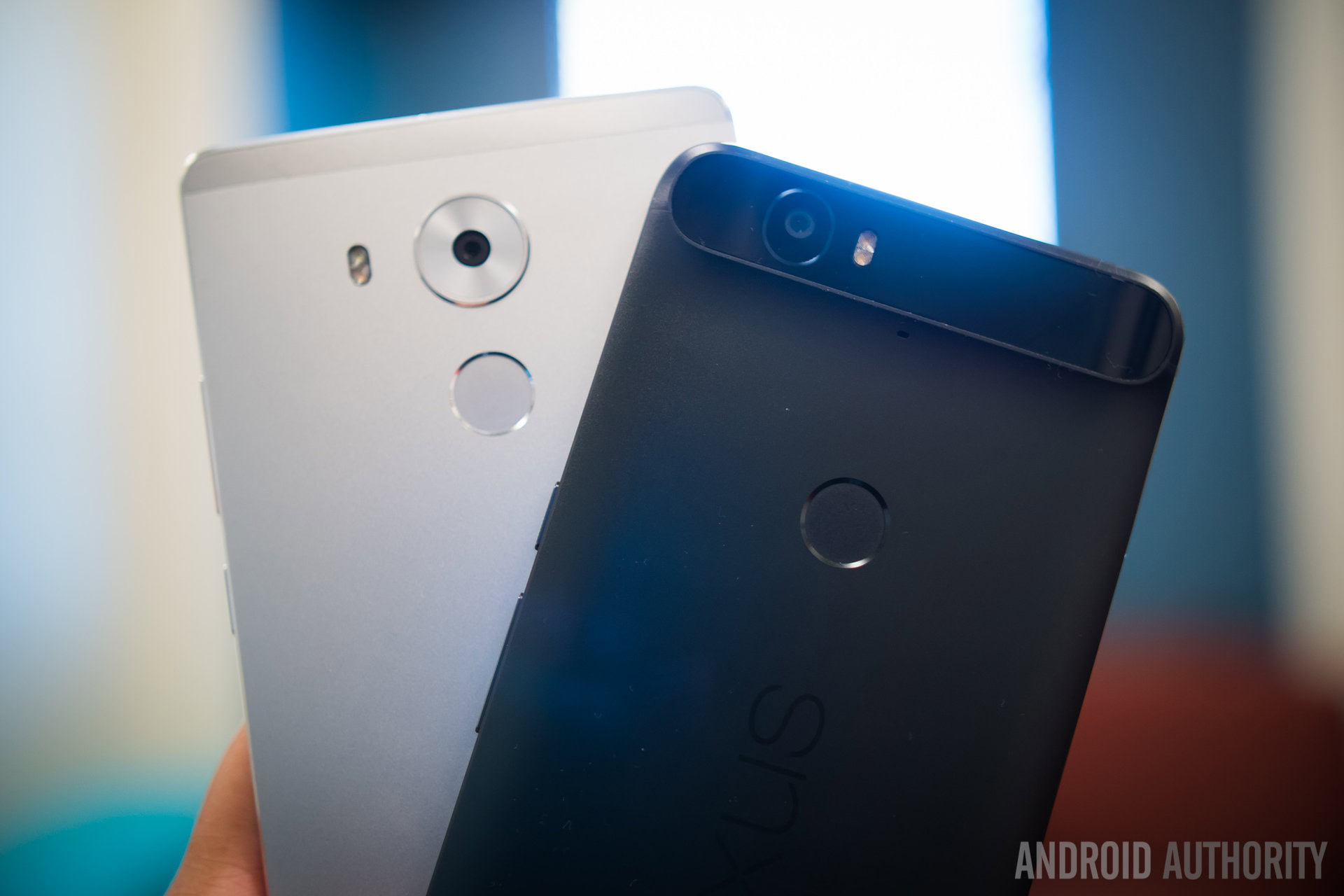
32 GB and 64 GB are built-in storage options available with both, with the Nexus 6P also adding an 128 GB iteration, which power users will have to depend on, given the lack of microSD expansion. The Mate 8 does offer expandable storage, but it does require use of the second SIM slot, leaving it up to the users to make the choice between more storage or dual SIM capabilities. Also of note is the fact that which storage option you opt for with the Mate 8 also dictates what RAM the device packs, either 3 GB or 4 GB.
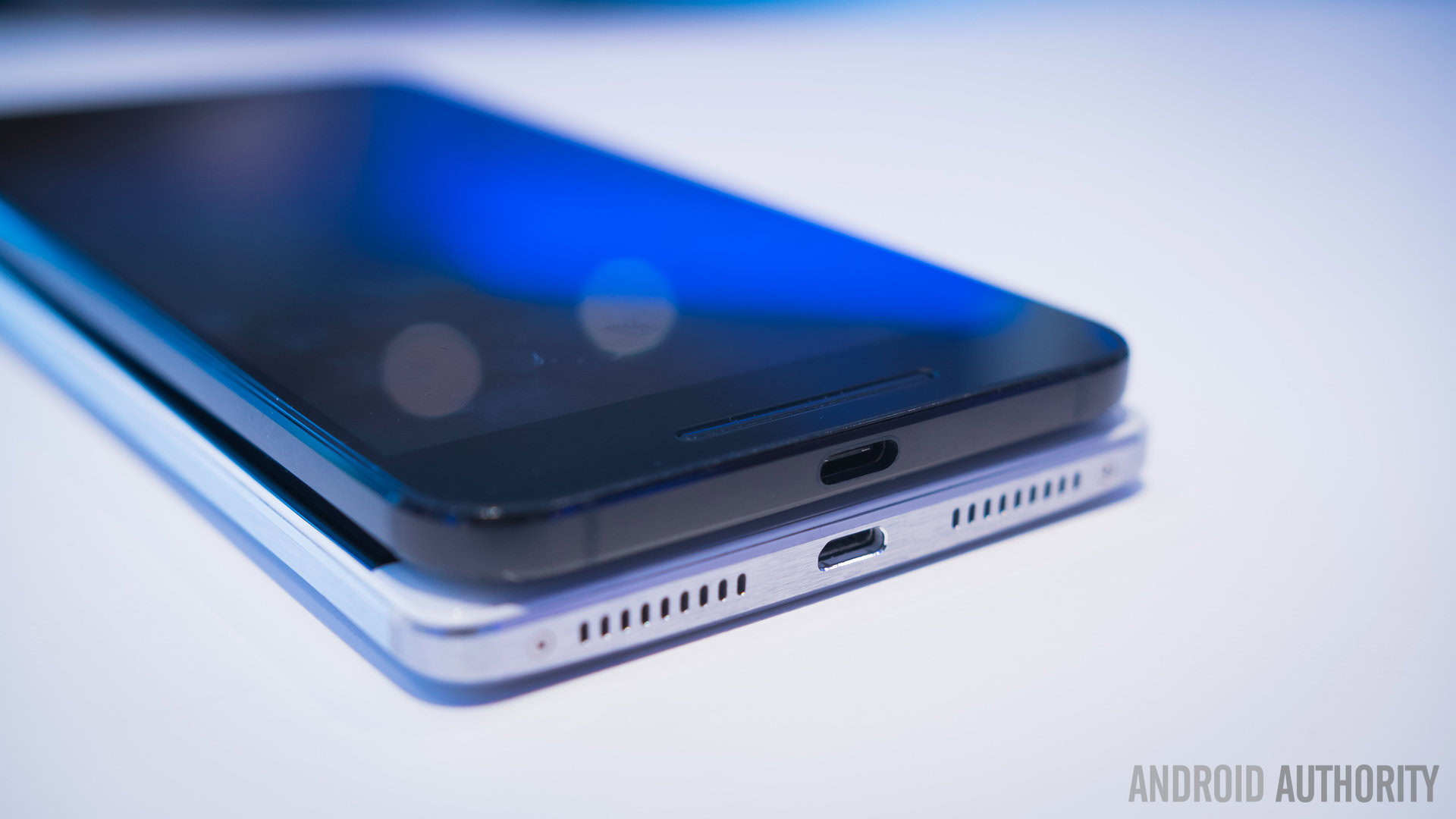
As far as the audio is concerned, the dual front-facing speaker setup of the Nexus 6P provides a great sound experience, which is unsurprisingly better than what is on offer with the bottom mounted speaker of the Mate 8. Granted, the latter does provide good body, but doesn’t get nearly as loud as the former, and is certainly a few steps back from the experience you get from the Nexus.
Both phones feature a standard suite of connectivity options, including NFC. The Mate 8 comes with every radio possible, allowing for the phone to be used pretty much anywhere in the world, and it’s great that you don’t have to worry about compatibility if you have to import the device. The Nexus 6P has seen a world wide release, and you can find versions that are compatible with every major carrier in the markets it has been released in.
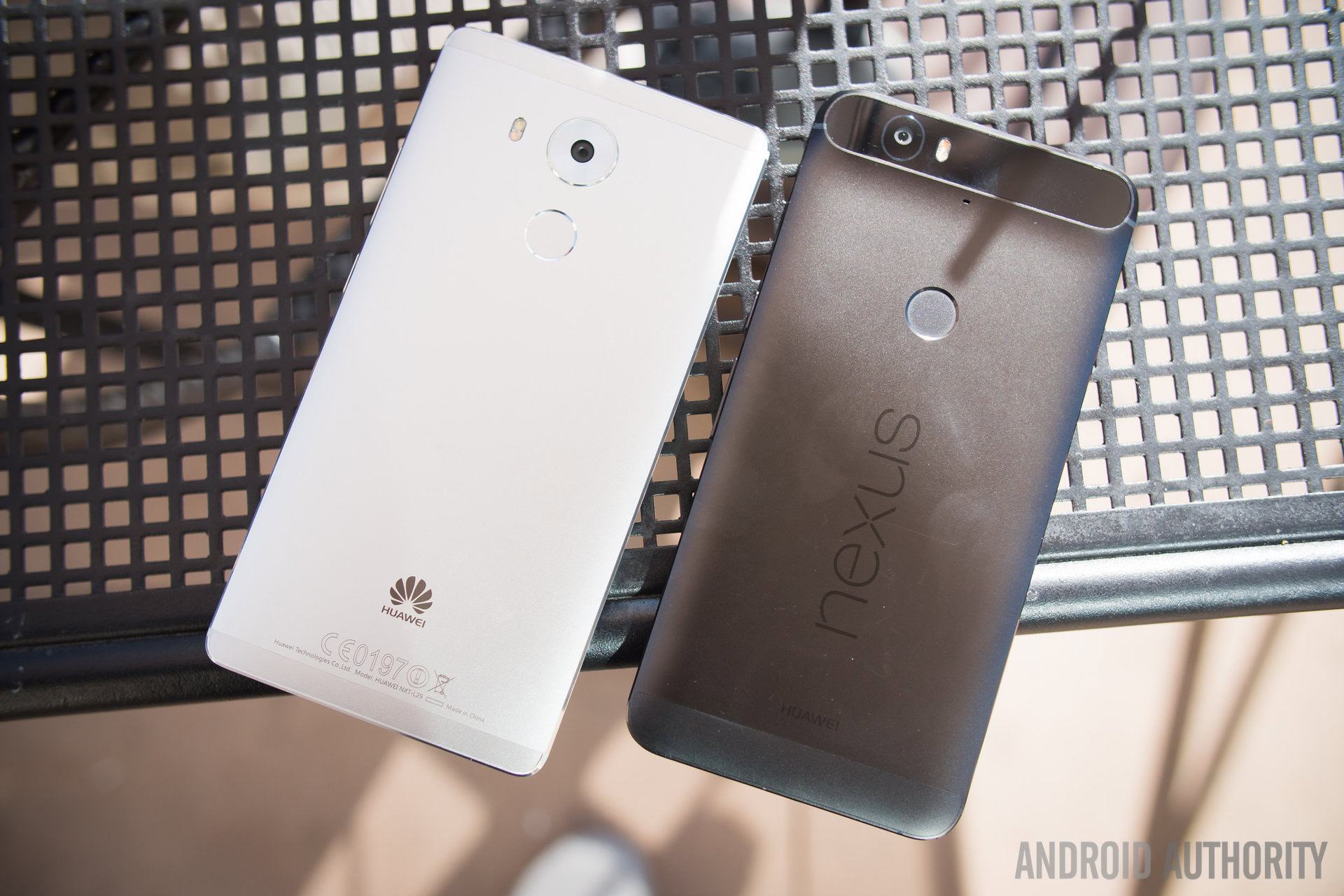
Of course, the hardware aspect that everyone talks about when it comes to HUAWEI devices is power. On one hand, the Nexus 6P comes with a 3,450 mAh battery and Google adopting the new USB Type-C standard means that the battery can be charged very quickly. Granted, Type-C cords are harder to come by, and there will be some growing pains associated with getting used to something new, but that will change quickly as more and more OEMs make the switch.
On the other hand, the Mate 8 packs a larger 4,000 mAh battery, and EMUI does a very aggressive job of letting you know what apps are being power hogs, with you also having the option to blacklist these in the optimizer, to help get that little bit of extra juice. All things considered, the Mate 8 comfortably allows for 2 full days of battery life. Providing that extra bit of icing on the cake, the device also comes with fast charging capabilities of its own, giving you a full day’s worth of battery after charging it for just half an hour.
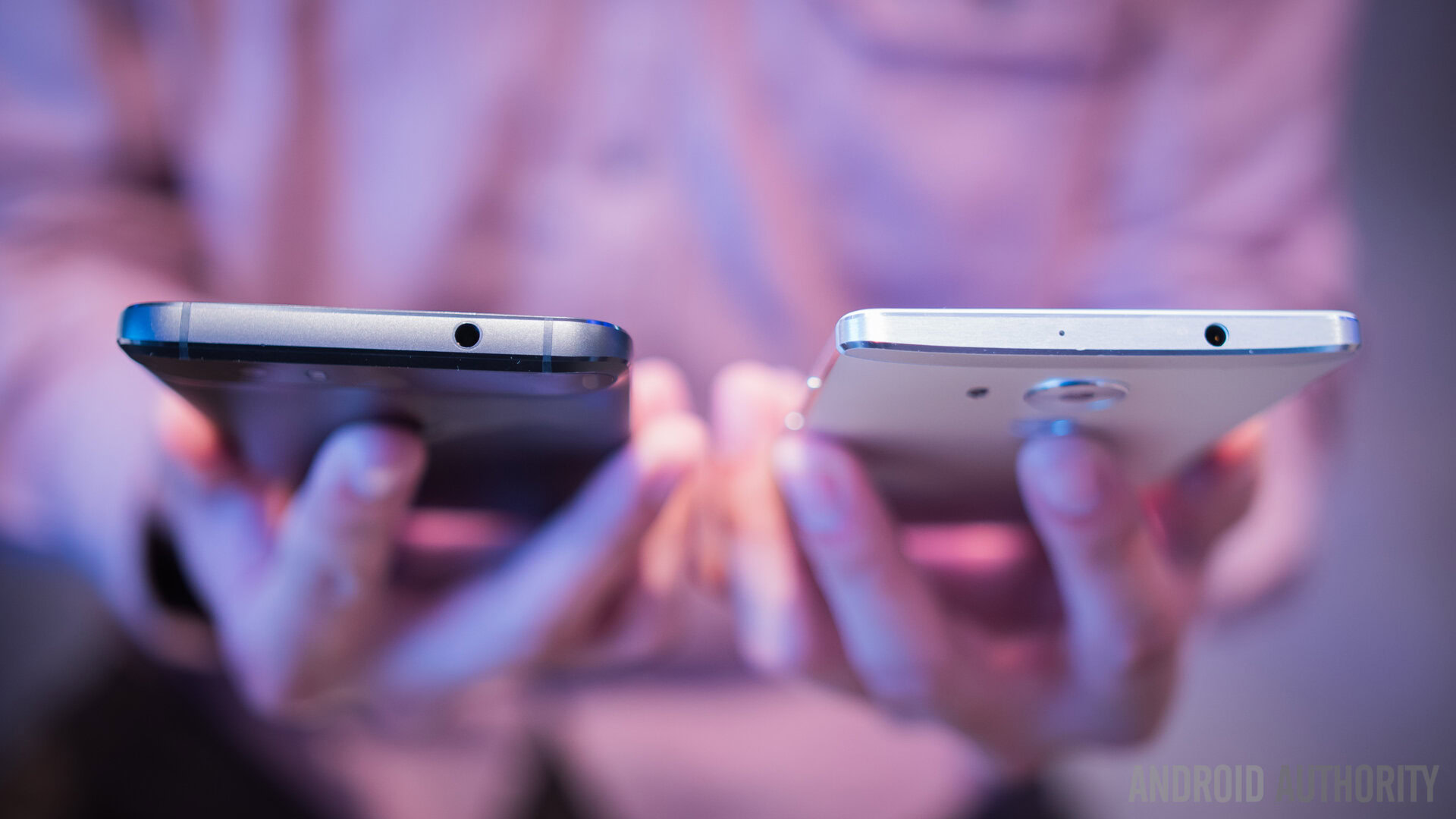
A day and a half of battery life is possible with the Nexus 6P, by taking advantages of features like Doze, and you can’t go wrong with either phone when it comes to power, but if you are a power user that really needs your phone to last the extra mile, the Mate 8 may be exactly what you’re looking for.
Camera
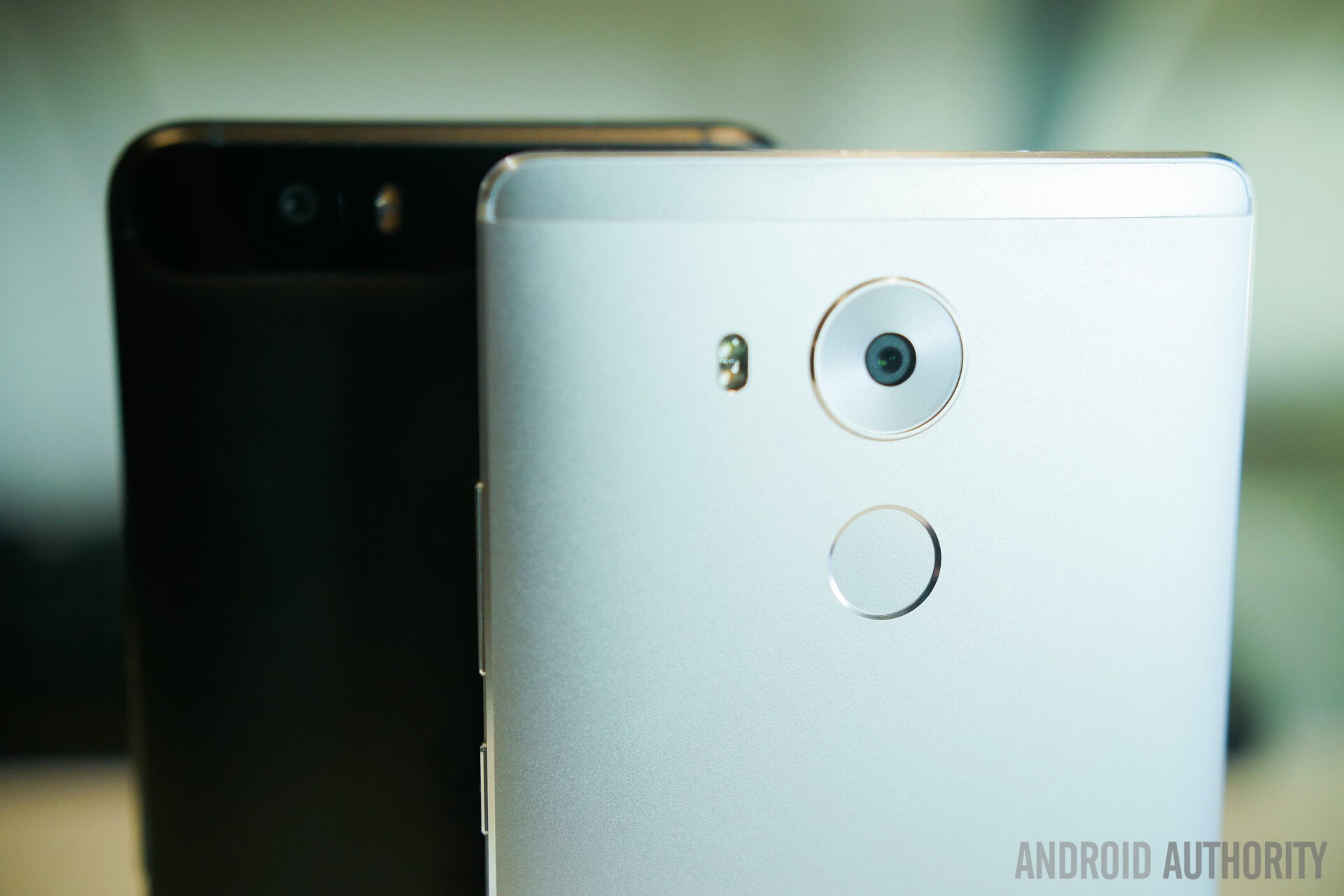
On paper, you might assume that the Mate 8 has the Nexus 6P soundly beat when it comes to the camera, with the former featuring a 16 MP rear shooter with OIS, compared to the 12.3 MP primary camera of the Nexus 6P, with optical image stabilization unfortunately missing here. Of course, the on-paper specs never tell the full story. Before we dive into camera performance, let’s talk about the camera software.
Taking a look at the respective camera applications first, they couldn’t be more different. While the Nexus 6P camera app does come with different options and a few modes, simplicity is the order of the day here, with a “what you see is what you get” user interface, with the only mode prominently used here being Auto HDR. With the Mate 8, you get a lot more features and modes built in, including a manual mode that allows for a lot of granular control over key aspects, and it works really well to let you cater the shot to exactly how you like it.
Nexus 6P camera samples
As we get into actual camera samples, we do find a bit of discrepancy between the two. The Nexus 6P’s larger pixel sizes just barely make it that much better than the Mate 8 in brighter situations. There’s a bit more color depth in Nexus 6P photos, and when using HDR, it simply has a much better way of interpreting the scene than the Mate 8, which sometimes doesn’t look like it is doing much at all when HDR is enabled. While it is a tough call between the two when in ideal lighting conditions, things are a lot more clearer, quite literally, in dimly-lit situations. You get much darker and noisier photos with the Mate 8, and nowhere close to the same type of quality available with the Nexus 6P in these conditions.
HUAWEI Mate 8 camera samples
It was a bit disheartening to see the Mate 8 provide a lackluster camera experience overall, especially when considering HUAWEI is capable of a good one, as seen with the also HUAWEI-manufactured Nexus 6P. As far as the camera is concerned, the Nexus 6P is certainly the better companion to have in your pocket.
Software
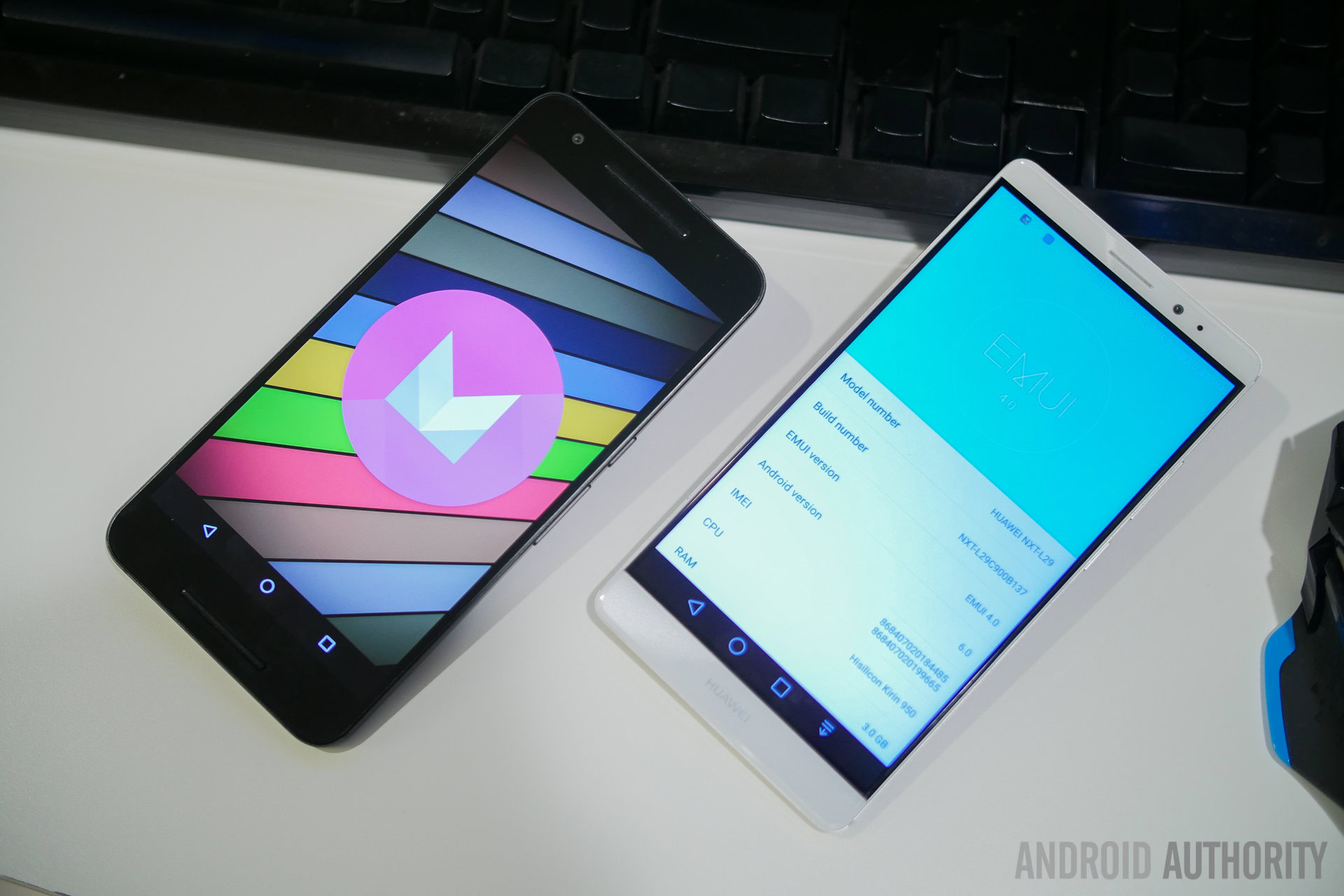
Finally, we have software. This is one of those categories that will be really easy for a lot of people to pick between, because either you’re a stock Android purist or you actually enjoy all of the extra features that might come in an Android skin.
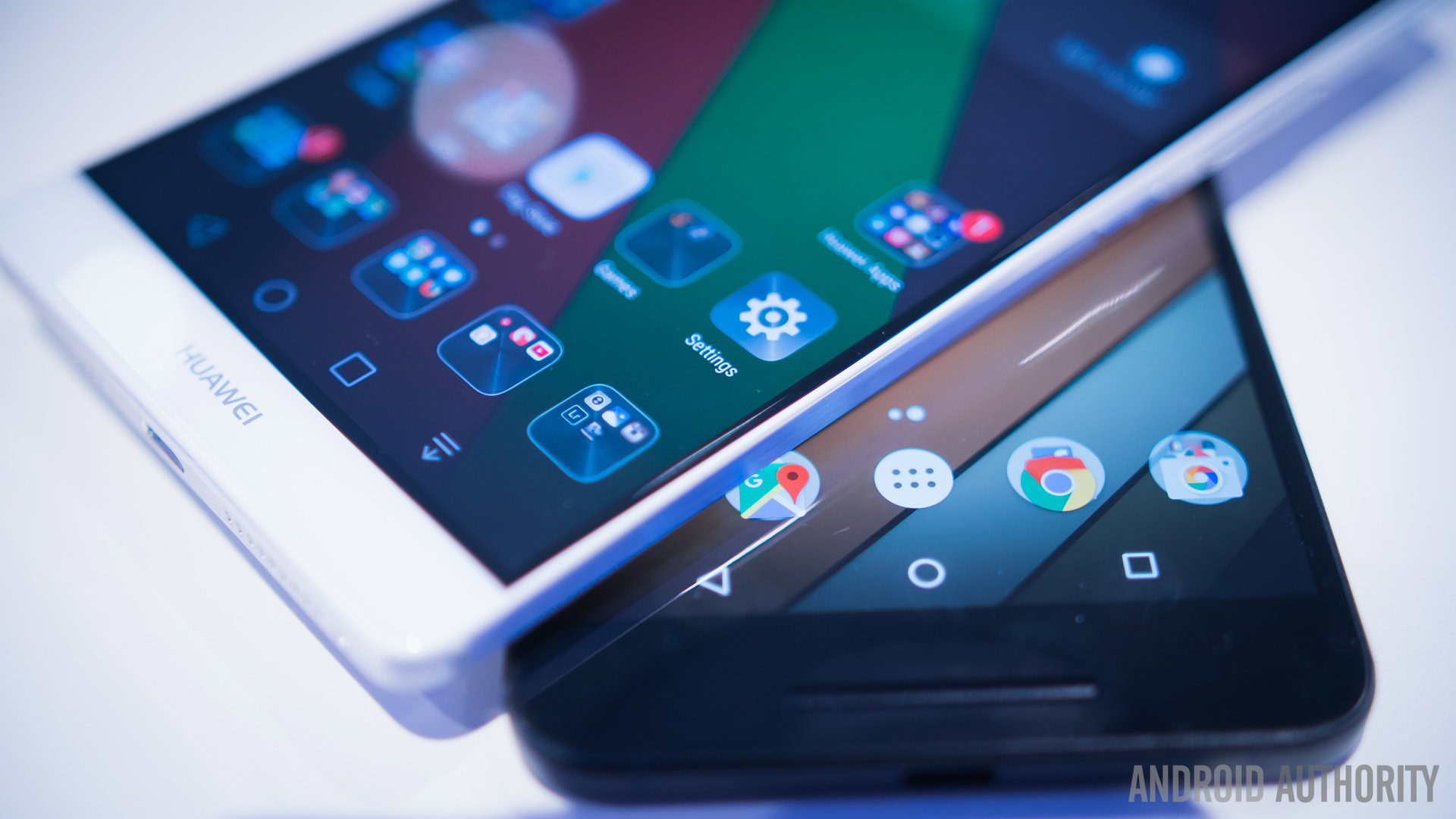
Android 6.0 Marshmallow is seen with both smartphones, so a number of the same features can be found, such as Google Now on Tap. That said, the stock Android experience is definitely far more streamlined, even if its simplicity is what sometimes turns some people off. You do get an app drawer here though, which is something that a lot of people gravitate to, and is unfortunately once again not a part of the EMUI experience.
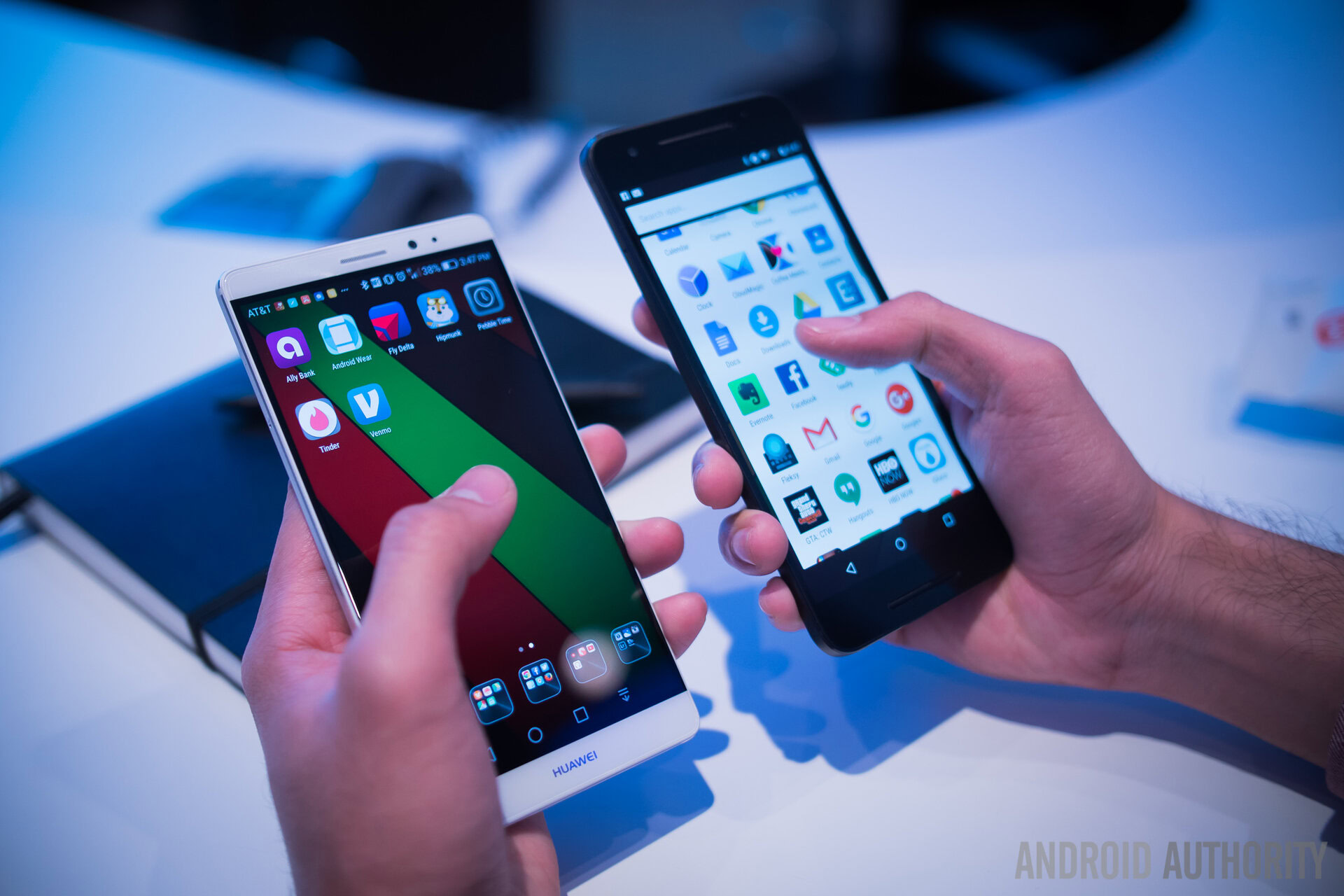
Stock Android provides exactly what you need for a great mobile experience, without too many extras, but if extras are what you need, the Mate 8 might be worth a look. However, it has be to be said that while EMUI is not lacking in features, a great number of these additions aren’t particularly useful. Knuckle sense, for example, is a feature that you seemingly can’t trigger without sometimes practically punching the device, and really ends up being slower than if you would have just done things “the old fashioned way.” The dual window function is also fairly useless, given that there aren’t too many apps that can take advantage of it, with only eight apps offering support, many of which really don’t pair all that well together.
Of course, many of these extras can be ignored if they aren’t right for you. But let’s talk about what’s missing from EMUI: the app drawer. With no app drawer to be found, users are left dependent on folders to keep things organized and clutter free. This works for some, especially those coming from an iPhone, but it certainly goes against the traditional Android approach. It also needs to be pointed out that the multi-tasking menu, notification tray, and settings are all a good deal different than what you’d get with stock Android. Whether that’s better or worse is down to your own personal preferences.
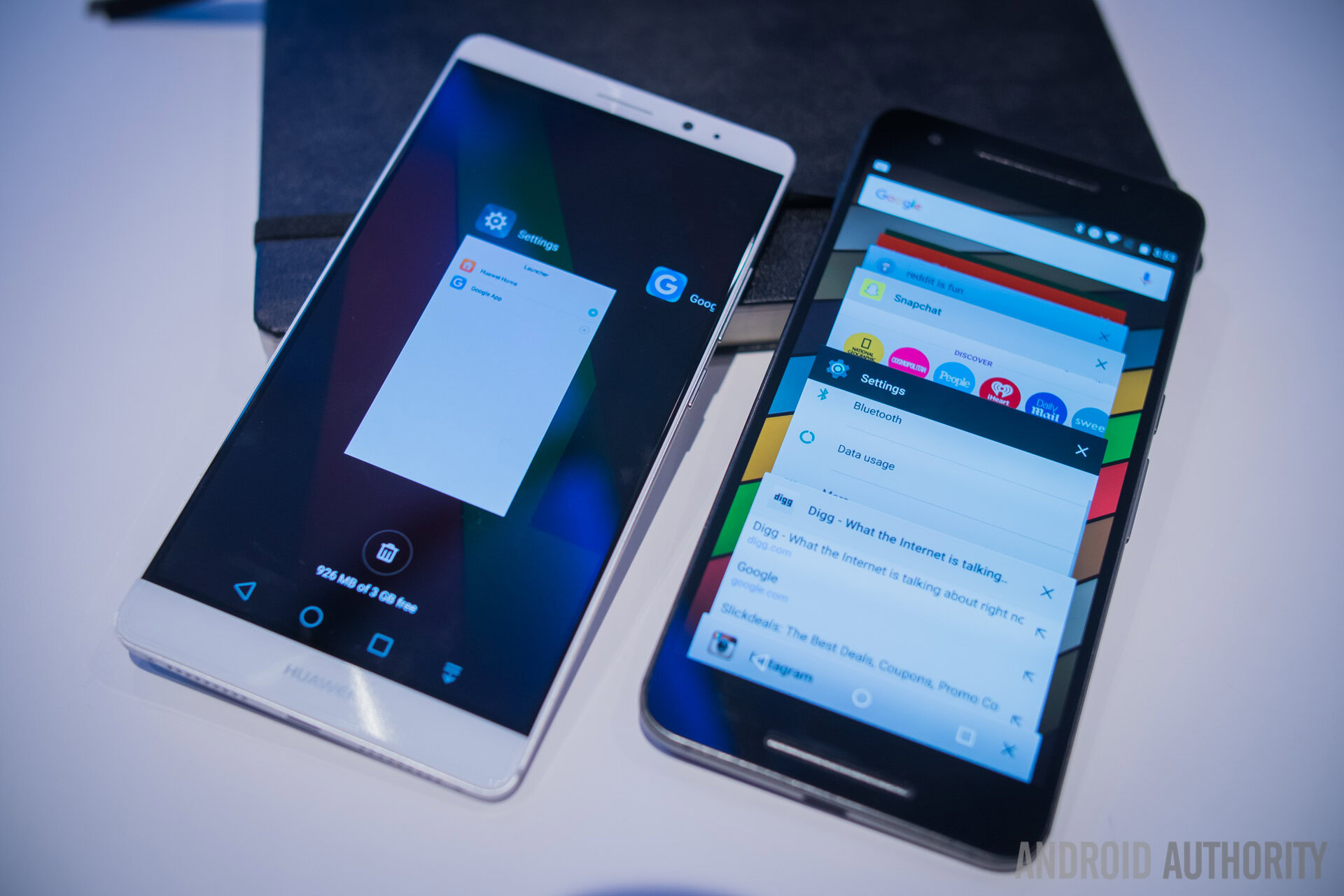
That said, one area of software where HUAWEI truly shines is EMUI’s power consumption features, as these are the reason its battery can go the distance. Not only are there difference modes such as a ultra power saving mode that turns off everything but calling and texting, there’s also a smart mode, a performance mode, and a variety of tools that help you better regulate what apps are allowed to work in the background, and which aren’t.
For those that aren’t pleased with the out-of-box look and feel of EMUI, you’ll be happy to know that custom themes and plenty of settings options exist that can help you customize the experience to make things a little bit more to your liking. Ultimately though, we find ourselves installing third party launchers, just so we can bring a bit more of a traditional Android experience to the Mate 8.
Specs comparison
| HUAWEI Mate 8 | Nexus 6P | |
|---|---|---|
Display | HUAWEI Mate 8 6-inch IPS LCD display Full HD resolution, 368 ppi | Nexus 6P 5.7-inch AMOLED display Quad HD resolution, 518 ppi |
Processor | HUAWEI Mate 8 2.3 GHz octa-core HiSilicon Kirin 950 Mali-T880MP4 GPU | Nexus 6P 2 GHz octa-core Qualcomm Snapdragon 810 Adreno 430 GPU |
RAM | HUAWEI Mate 8 3/4 GB (depending on storage option) | Nexus 6P 3 GB |
Storage | HUAWEI Mate 8 32/64 GB (also dictates amount of RAM) expandable via microSD card by up to 128 GB | Nexus 6P 32/64/128 GB not expandable |
Camera | HUAWEI Mate 8 16 MP rear camera, f/2.0 aperture, dual LED flash 8 MP front-facing camera | Nexus 6P 12.3 MP rear camera, f/2.0 aperture, 1.55µm pixel size, dual LED flash 8 MP front-facing camera |
Connectivity | HUAWEI Mate 8 Wi-Fi 802.11 a/b/g/n/ac Bluetooth 4.2 GPS + GLONASS FM Radio NFC USB 2.0 (microUSB) | Nexus 6P Wi-Fi 802.11 a/b/g/n/ac Bluetooth 4.2 GPS + GLONASS NFC USB 2.0 (USB Type-C) |
Battery | HUAWEI Mate 8 4,000 mAh | Nexus 6P 3,450 mAh |
Software | HUAWEI Mate 8 Android 6.0 Marshmallow | Nexus 6P Android 6.0 Marshmallow |
Dimensions | HUAWEI Mate 8 157.1 x 80.6 x 7.9 mm 185 grams | Nexus 6P 159.3 x 77.8 x 7.3 mm 178 grams |
Gallery
Pricing and final thoughts
The Nexus 6P is available unlocked through the Google Store and through select retailers globally, priced at $499 for the base model. On the other hand, the HUAWEI Mate 8 is not offered in North America, though it is avaliable in Europe and parts of Asia. For those interested in picking it up in the US, the good news is that the Mate 8’s variety of bands means it will play nicely with US LTE networks. You can find imported international models for around $600 on Amazon, alongside a number of other e-tailers.
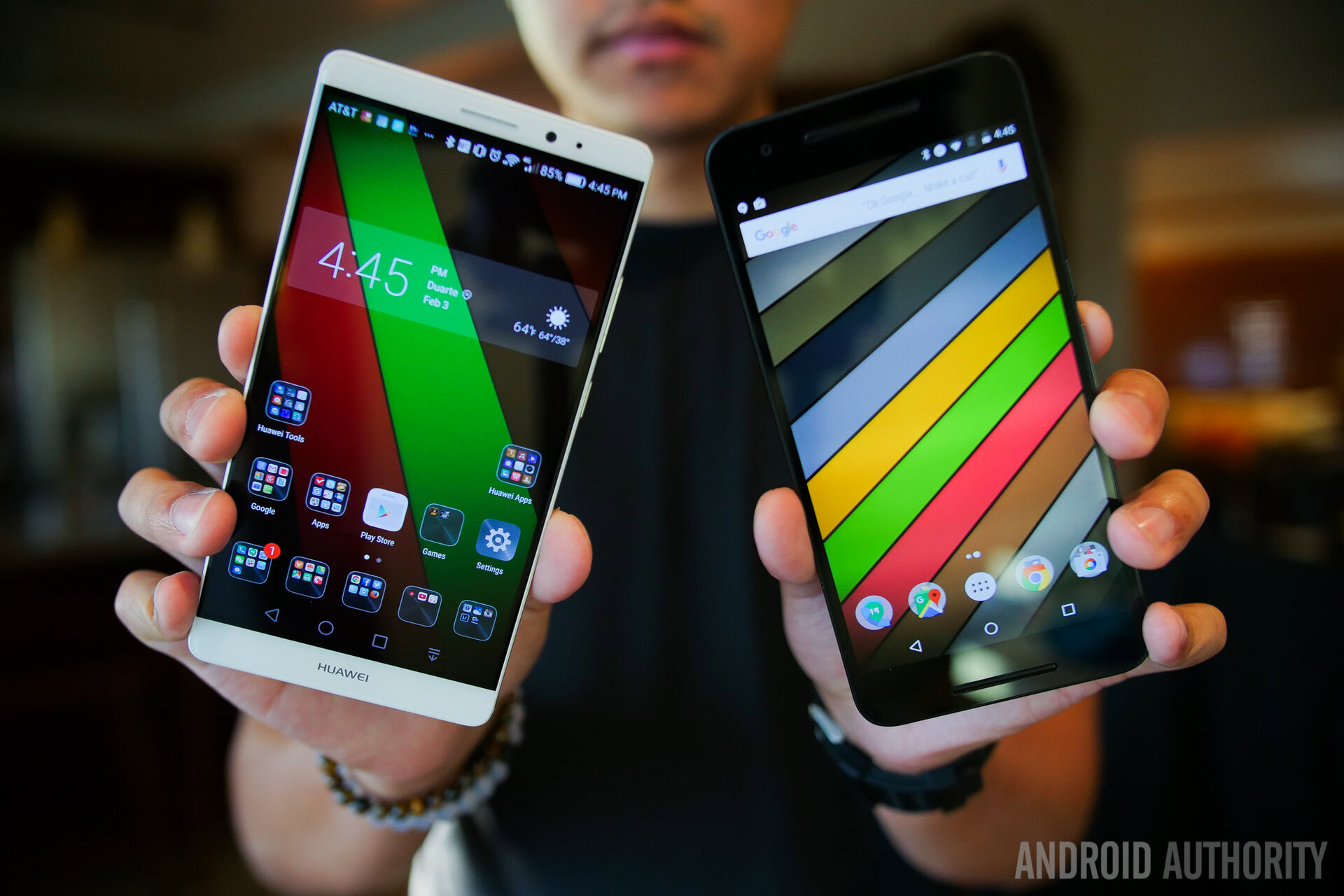
There you have it for this comprehensive look at the Nexus 6P vs HUAWEI Mate 8! These are two of the best devices that HUAWEI has ever released. Both handsets provide a great experience underneath the hood, as well as great materials on the outside, and it really shows you just how much HUAWEI has matured over the years. In reality, neither choice is a bad one, as it really comes down to what you really need in a flagship.
The 6P provides stock Android experience that is very smooth, snappy, reliable, and offers a good battery experience. You also get front facing speakers and promise of quick updates that Google provides with its Nexus devices. But if power is what you need, there’s really no other device out there that can compete with the Mate 8. The Mate 8 also has a few advantages like dual-SIM functionality and microSD. On the downside, the Mate 8 lacks front facing speakers and offers a software experience that may not be for everyone.
Which handset best matches what you’re looking for in a flagship? Let us know in the comments below, and stay tuned to Android Authority for more great comparisons, reviews, daily news, and so much more.
